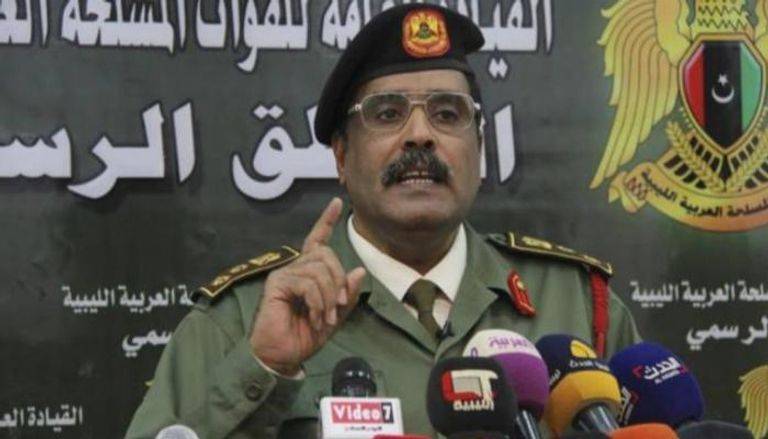The spokesperson for the Libyan Army commander, Major General Ahmed Al-Mismari, confirmed today, Friday, that the General Command lost contact with military personnel during the flood. Al-Mismari stated in a press conference: "I held a meeting on Saturday before the disaster occurred and issued decisions to increase readiness and prepare to provide humanitarian services to citizens in case of emergencies; an emergency committee was also formed in cooperation with the Libyan government emerging from the parliament."
He added that the cyclone wiped away everything in its path while moving from the west to the east of the country, indicating that the Libyan army lost more than 80 officers and soldiers in Derna. He noted that the current floods are the first of their kind in Libya in terms of intensity and scale, stating that the Al-Marj plain and the village of Al-Wardiya were completely obliterated, with more than a million people affected.
Al-Mismari also mentioned that "the small area of Al-Wardiya, famous for its honey, has been flattened in Libya," adding that the area no longer exists entirely, while all homes in the Al-Biyada area were submerged. He pointed out that the entire Green Mountain region has become disaster-stricken due to the unprecedented calamity, indicating that all cities in the Green Mountain region require reconstruction due to the aftermath of the floods.
He explained that Derna has been divided into eastern and western parts by a valley caused by the flood, adding that all main and secondary roads in the Green Mountain area have become completely cut off. The spokesperson revealed that the General Command lost contact with military personnel during the flood, with more than 80 officers and soldiers confirmed dead or missing in Derna.
Al-Mismari continued, stating that there are over 1.2 million people in the Green Mountain region affected by the repercussions of the floods, confirming the presence of Syrian, Palestinian, Egyptian, and Sudanese communities in the area, in addition to hundreds of thousands of Arab and African workers. He emphasized that the region includes five main cities: Al-Marj, Al-Bayda, Susa, Shaht, Al-Qubbah, and Derna, as well as several large and small villages and dense residential complexes, noting that the area was hit hard and regions were completely wiped out.
Moreover, Al-Mismari noted that the storm intensified in the Al-Bayda area near Derna, where conditions became very difficult before reaching Derna, pointing out that Derna is located on a narrow coastal strip, divided by a valley that exacerbated the disaster. He followed that the first dam is located 13 kilometers from Derna, while the second is only one kilometer from the city, highlighting that the protective measures at one of the dams were very inadequate. After the first dam, which is distant from the city, collapsed, the water flowed to the second dam and then swept into the city through the valley, leading to the disaster.
He explained that his country received aid from Egypt, the United Arab Emirates, Algeria, Tunisia, Saudi Arabia, Qatar, and all friendly and brotherly countries, expressing gratitude to everyone. He noted that the unified Arab humanitarian effort in Libya made all disagreements fade away, confirming that the Libyan people demonstrated unity and solidarity during the disaster.




